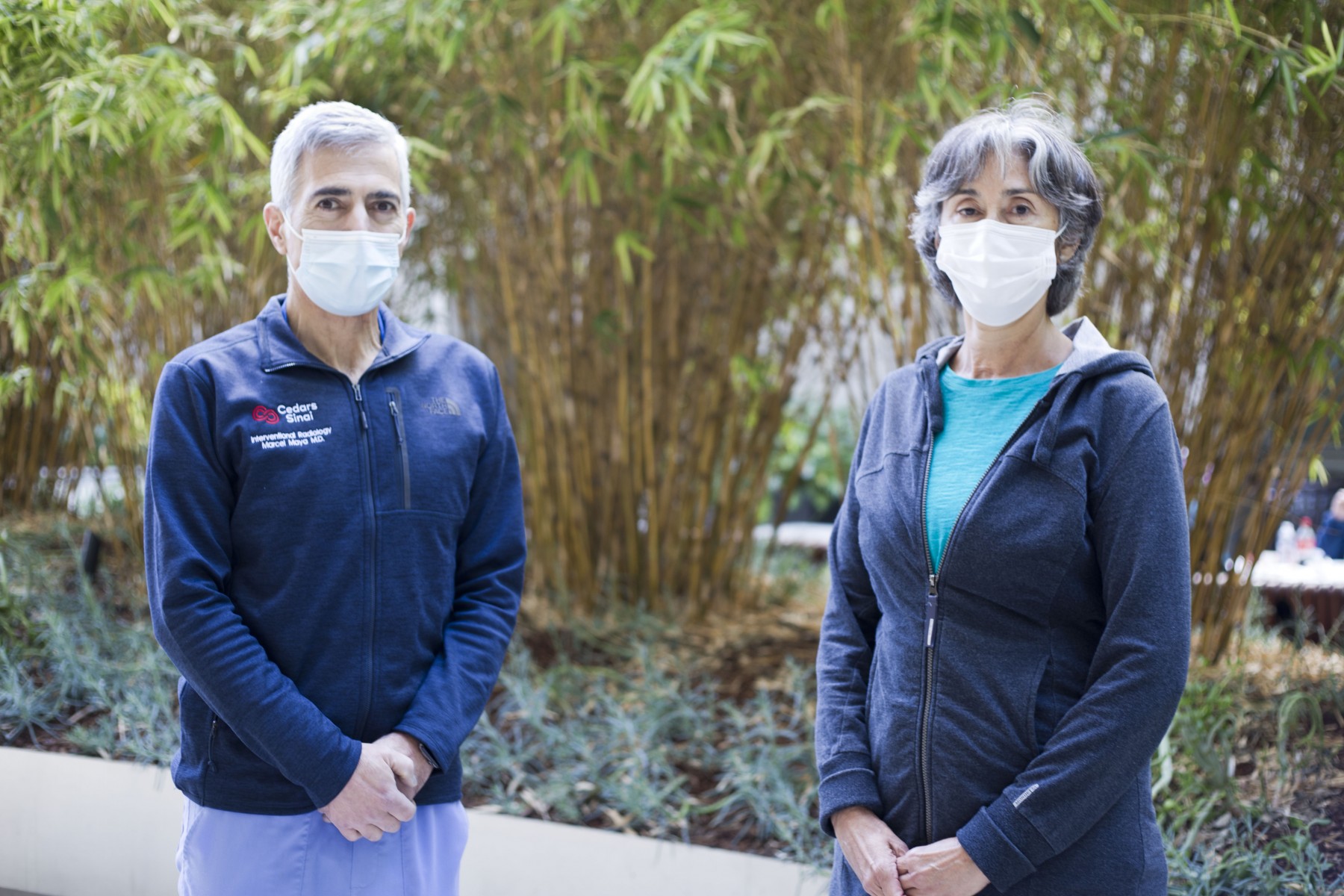When Maria Reynoso developed low-back pain, she thought it was not serious and would quickly go away. She was an active gym member who had recently retired after 33 years as a second-grade schoolteacher and was always available to help her aging parents.
But the pain lingered, affecting Reynoso’s ability to pursue her active lifestyle.
“I thought, ‘I can’t have this underlying pain for the rest of my life,’” Reynoso said. “I was so depressed.”
Reynoso’s quest for relief led her first to physical therapy, which helped Reynoso improve her range of motion. But the pain was ever-present.
“I used to dread going to my parents’ because helping them would exacerbate my pain,” said Reynoso. “If I took a walk, I’d pay for it because the next day, I’d barely be able to move.”
Eventually, Reynoso’s search led her to interventional neuroradiologist Marcel M. Maya, MD, co-chair of the Cedars-Sinai Department of Imaging, who used a new, minimally invasive procedure called “basivertebral nerve ablation,” which targets specific nerves that transmit pain signals.
Within weeks, Reynoso was able to again move without pain. “I took one-hour walks without paying the price,” she said. “I can now help my mom, who lives by herself and is in remission from cancer.”
Maya said the relatively new procedure is appropriate for patients who have low-back pain lasting at least six months despite conservative therapies, have degenerative disks, and have specific MRI findings indicating chronic inflammation at vertebral endplates – the interfaces between spinal disks and vertebrae.
“In patients with chronic back pain, pain signals are being transmitted by the basivertebral nerve. We use a minimally invasive procedure which applies heat and burns the nerves, so the patient experiences pain relief,” Maya said, adding that the nerves are precisely targeted through pre-procedure imaging.
The procedure takes approximately 90 minutes and is performed while the patient is under light anesthesia.
Before learning about the procedure, which she underwent about four months ago, Reynoso, 60, said her low-back pain affected both her physical and emotional wellbeing.
“When they told me that I qualified for the procedure but it was new, I was nervous and worried. I prayed and put it out to the universe, then took a day to decide I was going to go ahead with it,” Reynoso said. “I trusted Dr. Maya and I feel like I have my life back.”
Maya said basivertebral nerve ablation is a welcome, minimally invasive option for patients with chronic back pain who range in age from their 30s to 80s, like Reynoso.
“In the past, many of these patients would have undergone spinal fusion—the permanent connection of vertebrae to prevent the spine from moving,” Maya said. “This procedure will eliminate the need for fusion in many patients, and recently published studies show it can provide sustained relief in six-year follow-up.”
Nilou Salimpour-Davidov
